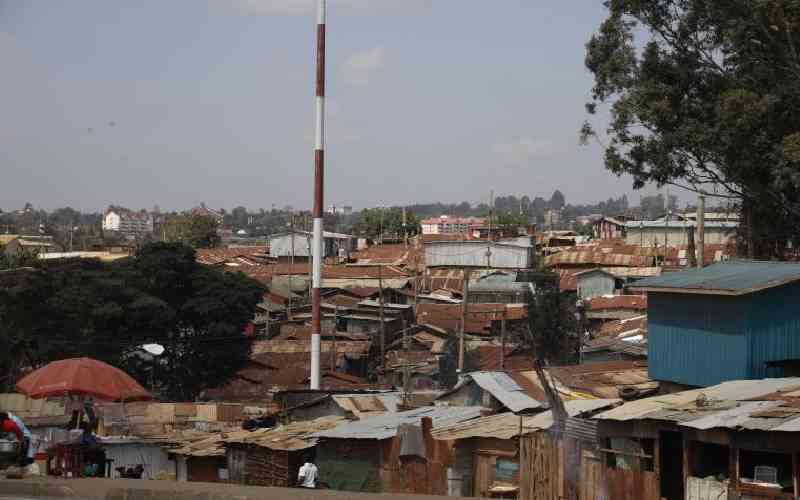A World Bank report on ease of doing business shows Kenya improved from position 80 in 2018 to 61 in 2019. From the Economic Survey Report 2019, Kenya’s real Gross Domestic Product (GDP) expanded by 6.3 per cent in 2018 up from 4.9 per cent in 2017.
However, not all is well. Latest Infotrak findings indicate 48 per cent of Kenyans have three concerns: unemployment, high cost of living, and corruption. Do these concerns have any correlation with the Big Four agenda?
To balance realisation of the concerns and the Government’s Big Four agenda, bold decisions have to be made on critical issues like climate change, employment opportunities, sustainable development strategies, pollution and increase of capacity for power generation. Improved power generation is a great incentive for the development of the manufacturing sector which the Government envisaged could employ about 1.3 million people by 2022.
Electric power is the prime mover for economic development, but Kenya’s energy sector has been marred by challenges; limited distribution capacity, limited capacity during peak demand, power rationing during drought periods, high cost of power production, and high cost of power consumption. To help meet the growing energy needs, complex factors such as sorting out the right mix of technology and managing the reliability of transmission grids ought to be considered.
Reduce cost
The Government needs to enact protectionist policies to safeguard local manufacturers against established or more efficient manufacturers abroad. The policies may, for example, be geared towards addressing the relatively high energy tariffs to manufacturers to help reduce cost of production and hence enhance their global competitiveness with established manufacturers abroad.
Kenya can improve its energy security by expanding its generation capacity for various sources like hydro, solar, wind, geothermal and nuclear power. On nuclear production, few people understand the reasoning behind peaceful usage of nuclear energy.
A majority of Kenyans are still sceptical about nuclear energy, perhaps due to inadequate knowledge. Some of the genuine concerns that face the nuclear industry include safety of nuclear plants, treatment/disposal of radioactive wastes and general capacity of Kenya to sustain nuclear technology programmes. Safety has been the greatest concern, particularly after the Fukushima disaster.
Most people are of the view that inasmuch as the probability of accidents is relatively low, the effects can be devastating. As a mitigation strategy, there have been design considerations for enhanced safety requirements.
Prior to incorporation of nuclear power in Kenya’s energy market, great effort has to be made in human resource development in terms of training and offering opportunities for practical experience to the formally trained personnel. Appropriate regulatory structures must be set up beforehand to guide minimum safety requirements and by extension provide assurance for sustainable and appropriate radioactive waste management systems.
Manufacturing sector
At present, more than 450 nuclear plants operate in 30 countries worldwide and with a next batch of about 30 countries (including Kenya) either constructing or planning the construction of new plants. Nuclear produces an average of 10 per cent global electricity supply. It is a secure and low carbon power source that prevent release of about two gigatonnes of carbon annually. With the execution of its nuclear energy blueprint, Kenya will boast of reliable power, joining economies like South Korea, Japan, France, USA, Canada, Russia, Ukraine, South Africa, etc. It is high time we stop thinking third-world.
A right energy mix with appropriate technologies and revamped transmission and distribution systems will lower the cost of energy and subsequently provide clean, quality, reliable and cheap power for both domestic and commercial use.
This will be an incentive to the manufacturing sector through attraction of various investors who may currently be a bit sceptical of costs and reliability of power, hence production costs in Kenya. Lowered production costs will lower end product costs and consequently the cost of living. Further, greater employment opportunities beyond the Government’s forecast 1.3 million manufacturing jobs will directly or indirectly be realised in other sectors of the economy.
Stay informed. Subscribe to our newsletter
Through enhancing our energy sector, I foresee Kenya becoming a centre of global excellence. We will also realise sustainable development in key areas such as food processing/production, infrastructure, innovation and allied sectors.
Mr Maklago is Postgraduate Student, KEPCO International Nuclear Graduate School, South Korea
 The Standard Group Plc is a
multi-media organization with investments in media platforms spanning newspaper
print operations, television, radio broadcasting, digital and online services. The
Standard Group is recognized as a leading multi-media house in Kenya with a key
influence in matters of national and international interest.
The Standard Group Plc is a
multi-media organization with investments in media platforms spanning newspaper
print operations, television, radio broadcasting, digital and online services. The
Standard Group is recognized as a leading multi-media house in Kenya with a key
influence in matters of national and international interest.
 The Standard Group Plc is a
multi-media organization with investments in media platforms spanning newspaper
print operations, television, radio broadcasting, digital and online services. The
Standard Group is recognized as a leading multi-media house in Kenya with a key
influence in matters of national and international interest.
The Standard Group Plc is a
multi-media organization with investments in media platforms spanning newspaper
print operations, television, radio broadcasting, digital and online services. The
Standard Group is recognized as a leading multi-media house in Kenya with a key
influence in matters of national and international interest.









